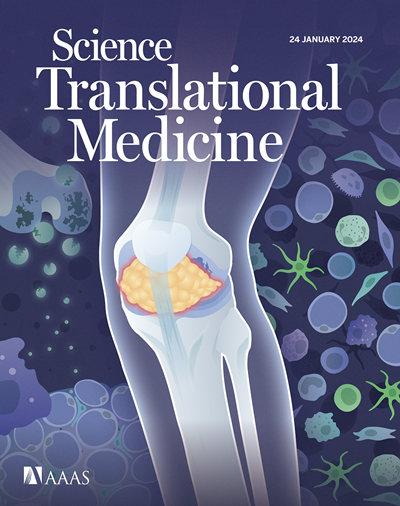反复暴露于 Omicron 病毒会使 SARS-CoV-2 特异性记忆 B 细胞向最新变种进化。
IF 15.8
1区 医学
Q1 CELL BIOLOGY
引用次数: 0
摘要
人们认为,SARS-CoV-2祖先毒株的免疫印记阻碍了以Omicron为基础的加强疫苗诱导Omicron特异性体液反应的能力。在这里,我们分析了先前被基于祖先毒株的 mRNA 疫苗印记的个体在重复接种 BA.5 后记忆 B(Bmem)细胞的特异性和中和活性。在第二次接触 BA.5 后,具有 BA.5 尖峰蛋白偏斜反应性的记忆 B 细胞被迅速激发,这与之前存在的抗体滴度相关。克隆谱系分析发现,BA.5偏向的Bmem细胞通过体细胞高突变将其特异性从祖先菌株重定向到了BA.5。此外,与来源于原始基因库的新生 Bmem 细胞相比,具有 BA.5 重定向特异性的 Bmem 细胞表现出更快的发育速度。这种重新定向的 BA.5 特异性在第二次接触 BA.5 几个月后表现出更强的抗病毒点突变能力,并能适应最近的 Omicron 变种 HK.3 和 JN.1,这表明旧疫苗激发的现有 Bmem 细胞能将其特异性重新定向到新进化的变体上。本文章由计算机程序翻译,如有差异,请以英文原文为准。
Repeated Omicron exposures redirect SARS-CoV-2–specific memory B cell evolution toward the latest variants
Immunological imprinting by ancestral SARS-CoV-2 strains is thought to impede the robust induction of Omicron-specific humoral responses by Omicron-based booster vaccines. Here, we analyzed the specificity and neutralization activity of memory B (Bmem) cells after repeated BA.5 exposure in individuals previously imprinted by ancestral strain–based mRNA vaccines. After a second BA.5 exposure, Bmem cells with BA.5 spike protein–skewed reactivity were promptly elicited, correlating with preexisting antibody titers. Clonal lineage analysis identified BA.5-skewed Bmem cells that had redirected their specificity from the ancestral strain to BA.5 through somatic hypermutations. Moreover, Bmem cells with redirected BA.5 specificity exhibited accelerated development compared with de novo Bmem cells derived from naïve repertoires. This redirected BA.5 specificity demonstrated greater resilience to viral point mutation and adaptation to recent Omicron variants HK.3 and JN.1, months after the second BA.5 exposure, suggesting that existing Bmem cells elicited by older vaccines can redirect their specificity toward newly evolving variants.
求助全文
通过发布文献求助,成功后即可免费获取论文全文。
去求助
来源期刊

Science Translational Medicine
CELL BIOLOGY-MEDICINE, RESEARCH & EXPERIMENTAL
CiteScore
26.70
自引率
1.20%
发文量
309
审稿时长
1.7 months
期刊介绍:
Science Translational Medicine is an online journal that focuses on publishing research at the intersection of science, engineering, and medicine. The goal of the journal is to promote human health by providing a platform for researchers from various disciplines to communicate their latest advancements in biomedical, translational, and clinical research.
The journal aims to address the slow translation of scientific knowledge into effective treatments and health measures. It publishes articles that fill the knowledge gaps between preclinical research and medical applications, with a focus on accelerating the translation of knowledge into new ways of preventing, diagnosing, and treating human diseases.
The scope of Science Translational Medicine includes various areas such as cardiovascular disease, immunology/vaccines, metabolism/diabetes/obesity, neuroscience/neurology/psychiatry, cancer, infectious diseases, policy, behavior, bioengineering, chemical genomics/drug discovery, imaging, applied physical sciences, medical nanotechnology, drug delivery, biomarkers, gene therapy/regenerative medicine, toxicology and pharmacokinetics, data mining, cell culture, animal and human studies, medical informatics, and other interdisciplinary approaches to medicine.
The target audience of the journal includes researchers and management in academia, government, and the biotechnology and pharmaceutical industries. It is also relevant to physician scientists, regulators, policy makers, investors, business developers, and funding agencies.
 求助内容:
求助内容: 应助结果提醒方式:
应助结果提醒方式:


